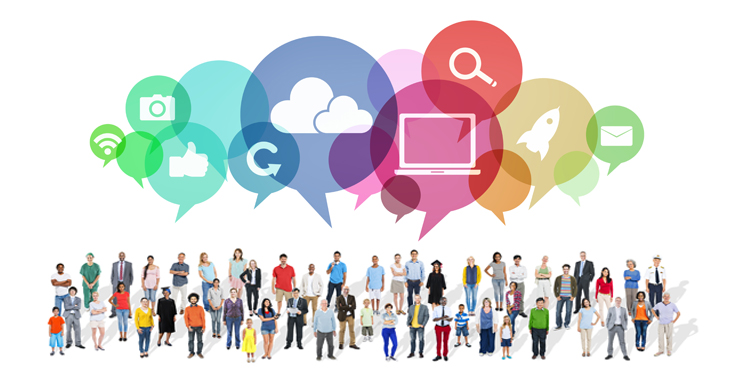Did you know that there are more than 75,000 health care professionals on Twitter? That 41 percent of consumers are using Facebook, Twitter, YouTube and online forums to select health care providers? Or that social media can help track the spread of fast-moving illnesses like influenza?
When you think of social media in health care, you might think it’s all about marketing. But experts agree, it goes beyond that.
Farris Timimi, medical director for the Mayo Clinic Center for Social Media, said that social media in health care is a "moral obligation.”
"Our patients are there. Our moral obligation is to meet them where they're at and give them the information they need so they can seek recovery," Timimi said. "This is not marketing; this is the right thing to do."
If it’s the right thing to do for doctors, nurses and other health care providers, then it makes sense for telemedicine providers too. After all, telemedicine is all about the innovative use of communication technology to improve patient care.
Consumers and Providers
Pretty much everyone agrees that patients and consumers were first to the table. They were using social media for health research, sharing and decisions before health care professionals finally arrived and joined the conversation.
With a reported one third of consumers looking to social media for medical information, it seems like a pretty good place for providers of all sorts to be sharing that info. And now they are, in ever increasing numbers.
In March 2014, Creation Pinpoint published a video analysis of the growth of worldwide health care professionals on Twitter between 2006-2014. This very cool interactive video allows you zoom in on any place in the world and drag the timeline back and forth to see the growth explode before your eyes.
Data, Data, Data
When it comes to analyzing the data to find out exactly what health care professionals are doing on social media, it’s not easy. In Greg Matthews’ article, Physician use of Twitter: Examining the data, he points to a study by Dr. Katherine Chretien as the first of its kind to really dig into the meat of what physicians are actually doing and saying on Twitter.
Not surprisingly, there is no equivalent study examining the use of social media in telemedicine, at least not to my knowledge. But there is talk.
In an article by Dr. Joseph Kim, he offers that social media is in fact a form of telemedicine – an informal and casual one that lacks reimbursement, but a form of it nonetheless.
Not Just for Connecting with Patients
So what’s going on with health care on social media beyond patient-provider connections and consumer use?
CEO of Creation Healthcare Daniel Ghinn said: "Public social media, including Twitter is changing the way that health care professionals are learning and collaborating professionally."
According to research by Creation Pinpoint, health care professionals post to Twitter approximately 152,000 a day, and there have been 208 million tweets by them since 2006.
The research showed that health care professionals are not just talking to patients; they’re talking to each other – networking, sharing research and resources. And in telemedicine, the scene is much the same.
Tracking Outbreaks
Perhaps one of the most exciting impacts of social media on healthcare is a new way to track the spread of fast-moving illnesses like the flu. An article in The Business of Federal Technology puts it very succinctly, saying, “flu spreads fast, but tweets spread faster.”
Given this unique condition where social media has become a voice about the wellness of populations, health organizations and federal agencies, such as the Centers for Disease Control and Prevention, are using predictive analytics of social media data to monitor and track possible disease outbreaks. It seems to me that this use of social media is a direct example of Dr. Kim's notion that social media is a form of telemedicine.
Telemedicine and Social Media
As the person who manages the Arizona Telemedicine Program’s (ATP) social media channels, I can say quite authoritatively that telemedicine providers and related companies are actively participating on social media channels.
Not only is social media a great networking tool for telemedicine and an effective way of reaching consumers, it’s a way to learn about what’s working for providers and what’s not. It’s also probably the fastest way to find out about anything and everything happening with telemedicine around the world.
ATP Joins the Conversation
Prior to September of 2013, ATP was not active on any social media. I joined the ATP team to kick-start the process. Today, we have a strong presence and have fostered valuable relationships on Twitter, Facebook, Google+ and LinkedIn.
Social media has allowed us to build relationships with national and international individuals and organizations. It has also strengthened our relationships with organizations that are a part of Arizona Telemedicine, such as Banner University Medical Center, Mayo Clinic Scottsdale, Banner Health and dozens of other health profession education entities.
In talking about a new study on social media in health care, Kelly Barnes, leader of the U.S. Health Industries Practice for PwC’s Health Research Institute said, "Savvy adopters are viewing social media as a business strategy, not just a marketing tool."
That’s my approach, and for good reason. Social media has the potential to impact an organization in so many ways, so why not implement it with all your organization’s goals in mind, not just those related to marketing.
If you’d like to hear more on this topic, please join me for the webinar “Impact of Social Media in Healthcare” on December 10, 2014.
I’d love to hear how you’re using social media as a consumer or provider of health services/information. Please share your comments.

